Fogging Machines: What Are They and How Do They Work?
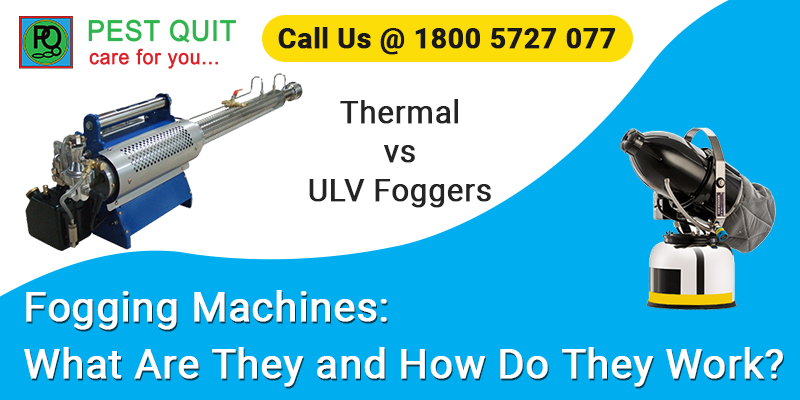
Fogging Machines: What Are They and How Do They Work?
COVID-19 is a dangerous situation, and we recognise that you, your family, and employee’s health and welfare are at risk.
One thing that has come out of this is the advancements in disinfecting equipment, especially fogging.

Fogging was once thought to be only used in agriculture or pest management, but it has now evolved into one of the most efficient ways to clean the spaces where we live and work.
Fogging offers healthy and reliable outcomes in combating infectious bacteria and viruses all over us, thanks to recent technological advances and environmentally sustainable solutions.
Thermal Foggers
Thermal foggers use heat in the fogging process, as the name implies. Thermal foggers use heat to vaporise a fogging solution, which is then sprayed out as a fog.
Depending on the type of fogger, thermal foggers have a heat barrel that is preheated to high temperatures using propane gas or electricity.
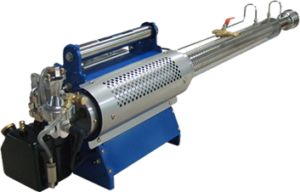
The fogging solution is a solvent that is immediately vaporised as it is pumped into the heat barrel.
This allows the fogger to create a thick layer of fog by producing a huge number of particles of relatively small scale.
ULV (Cold) Foggers
ULV stands for ultra-low volume, and these foggers are great for vast areas because they can spray up to 15 metres at once.
ULV Cold Foggers are reliable machines that can be used to safely apply disinfectants to manage and eliminate bacteria, viruses, odours, and even mould and mildew.
The ULV Cold Fogger delivers a large amount of air and produces aerosol microns of moisture, allowing the user to uniformly distribute disinfectant solutions to surfaces and the atmosphere.
Cold fogging methods are used with a ULV fogger. Foggers are fitted with engines that generate a high-power, low-pressure air stream to produce fog into tiny droplets.
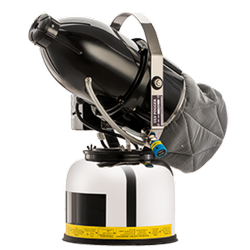
The motor’s high air pressure aids in spraying the fogging solvent through the nozzle, splitting it into tiny fragments.
The liquid solvent is released out of the nozzle like a thin mist or cloud.
The particle size produced by the ULV fogger can be modified to generate precise sized particles, allowing the fogger to be used in a wide range of applications.
ULV foggers can also be used both indoors and outside since they employ cold fogging methods and are not heated to high temperatures.
Thermal & ULV Fogger Droplet Sizes
The size of the particles produced by thermal and cold foggers varies depending on the fogger’s model.
Thermal foggers, can emit tiny particles, averaging in the 0.5-10 micron range, while ULV foggers produce larger particles, averaging in the 5-30 micron range.
Thermal foggers use a heating process that helps them to create very tiny particles, as small as 0.5 microns, that can penetrate very small spaces both indoors and outdoors.
A dark and heavy layer of fog is created by vaporising insecticide or another solution.
Since the fog created by a thermal fogger is clearly visible, it is possible to help monitor the fog’s direction.
Depending on how the fogger is used, various ULV foggers can emit different sized droplets.
While a thermal fogger can emit incredibly small particles, their size is variable, resulting in particles ranging in size from 0.5 to 30 microns.
ULV foggers can provide a very uniform particle size, and the particle size of these foggers can be changed by changing the flow rate.
This is particularly useful if you intend to fog several areas or use the fogger for several reasons, such as removing mould or odours indoors or destroying insects and other pests outdoors.
ULV foggers often use less diluent, allowing them to produce more efficient fogging solutions, lowering the cost of certain chemicals.
Uses of Thermal & ULV Foggers
Both thermal and ULV foggers are used to spray out either water or oil-based fogging solutions, and their application is similar in several respects. Insect prevention, odour and mould control in indoor environments, disinfection, pesticide application to plants, rodent control in factories, and other related applications use all kinds of foggers.
Aside from these cases, there are others in which thermal foggers are preferable to ULV foggers and vice versa.
Thermal Foggers Uses
Mosquito and insect control: Thermal foggers are effective for mosquito and other small insect protection because of the small droplets they release. The best droplet size for mosquito control is 5-20 microns, which most thermal foggers produce.
Controlled outdoor fogging: Since the fog generated by a thermal fogger is dense and clear, you can more accurately monitor the fogging direction. Outdoor fogging can be better regulated as a result of this.
Fogging regions that are obstructed: Due to its small particle size, the fog produced by a thermal fogger will reach into very narrow spaces such as floor holes, cracks in walls, and similar areas indoors, as well as dense trees, long grass, high treetops, and other difficult-to-reach outdoor areas. ULV foggers, on the other hand, do not use a lot of heat during the fogging process, so they can be used indoors without causing a fire hazard.
ULV Foggers Uses
In every indoor location: ULV foggers, as previously said, use cold fogging methods and are therefore suitable to use indoors.
For the purpose of odour management and disinfection: ULV foggers are often used to clean homes and large warehouses, as well as to control odours in these environments. As opposed to thermal foggers, ULV foggers can be left to function on their own and do not require constant human intervention.
On plants and greenhouses: Since ULV foggers allow for particle size adjustment, they can also be used to spray various solutions on plants outside or in greenhouses.
To get rid of molds: Mold is often removed from indoor spaces using ULV foggers and special chemicals.
Pest control, both inside and out: ULV foggers are the most powerful indoor pest control tool, but they can also be used outdoors to keep mosquitoes away.
How does regular fogging help industries?
- Aids in the elimination of all microorganisms found in the atmosphere.
- Drains, vents, and canopies are among the difficult-to-reach regions.
- Take on all pathogens, including viruses, bacteria, fungi, mould, and mycoplasma.
Fogging Solution's From Pest Quit
Our fogging solutions within pest control ranges from bed bug control, mosquito control and various other insect control. We also cater fogging solutions to disinfect the areas to help reduce the virus and bacteria.
Professional pest control is the only choice for serious pest problems. Experts at Pest Quit will help you determine the best plan of action for safely eliminating the pests.
Looking for Effective Pest Control Services in your city?
Then you are in the right place.

Related Posts
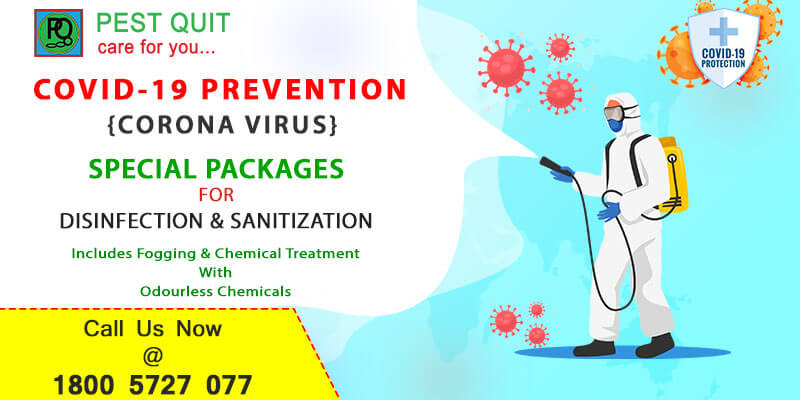
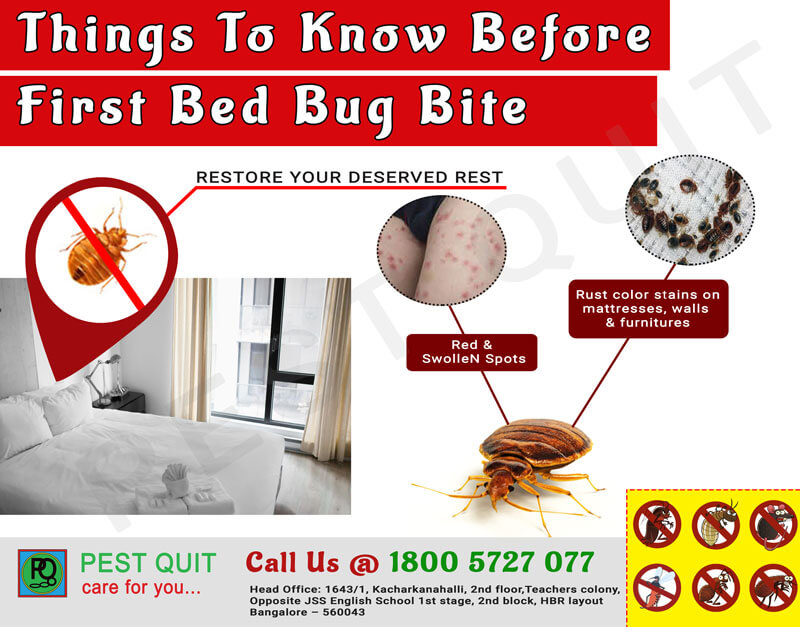
Things To Know Before First Bed Bug Bite
WHAT DOES BED BUG LOOK LIKE? In nature, Bedbugs are small insects who feed on…

Why is pest control important to any business?
Why pest control in any office is necessary? Our commercial or industrial space is always…
